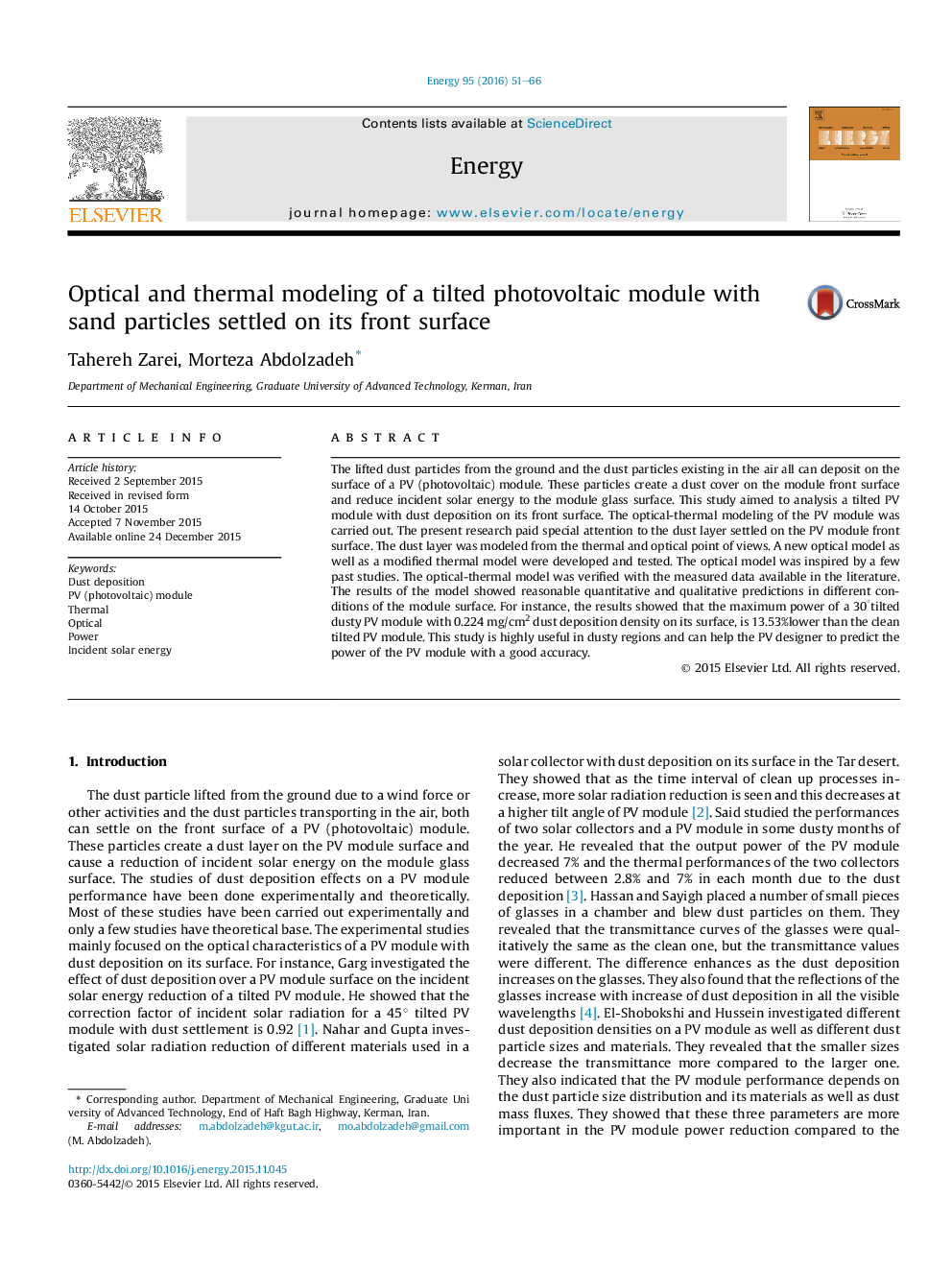| Article ID | Journal | Published Year | Pages | File Type |
|---|---|---|---|---|
| 1731414 | Energy | 2016 | 16 Pages |
Abstract
The lifted dust particles from the ground and the dust particles existing in the air all can deposit on the surface of a PV (photovoltaic) module. These particles create a dust cover on the module front surface and reduce incident solar energy to the module glass surface. This study aimed to analysis a tilted PV module with dust deposition on its front surface. The optical-thermal modeling of the PV module was carried out. The present research paid special attention to the dust layer settled on the PV module front surface. The dust layer was modeled from the thermal and optical point of views. A new optical model as well as a modified thermal model were developed and tested. The optical model was inspired by a few past studies. The optical-thermal model was verified with the measured data available in the literature. The results of the model showed reasonable quantitative and qualitative predictions in different conditions of the module surface. For instance, the results showed that the maximum power of a 30°tilted dusty PV module with 0.224 mg/cm2 dust deposition density on its surface, is 13.53%lower than the clean tilted PV module. This study is highly useful in dusty regions and can help the PV designer to predict the power of the PV module with a good accuracy.
Keywords
Related Topics
Physical Sciences and Engineering
Energy
Energy (General)
Authors
Tahereh Zarei, Morteza Abdolzadeh,
